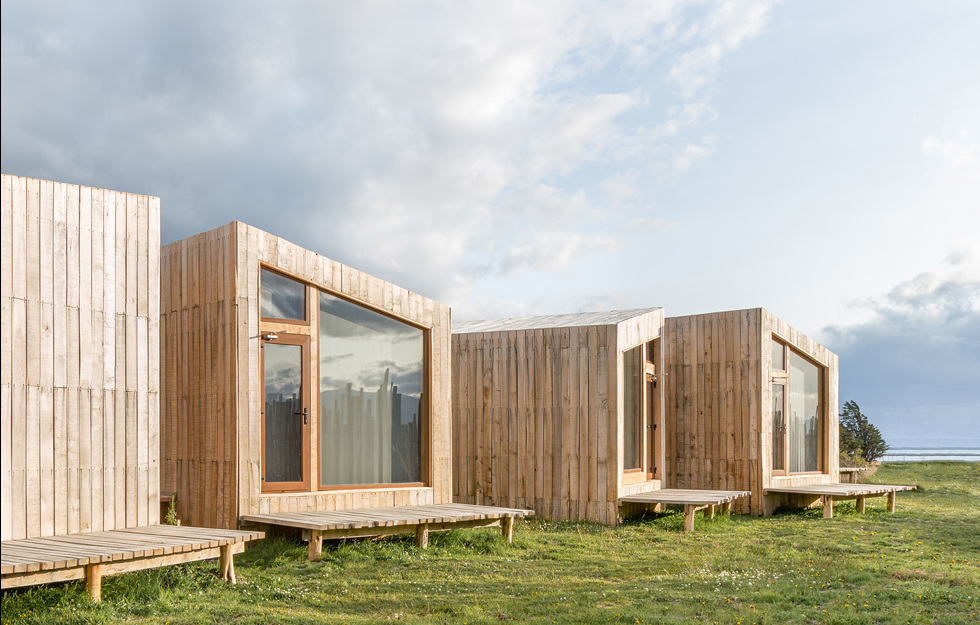Just where the High Coast bends north, by the stony beach in Kroksvedjan, in the glow of the evening sun, the final touches are being put to the shelters that will offer hikers a place to rest and reflect.
Both the design and practical construction are down to five future architects and planners. One of them is Emma Arvidsson, a fledgling landscape architect.
“Moving out into the natural world and working on a 1:1 scale gives you a different understanding of the problems that can arise, compared with leaning over a drawing board,” she explains.
Gustav Näsman, soon to be a structural engineer, agrees. He also emphasises the importance of the hands-on collaboration between engineers and architects that has been such a feature of the project.
“By being involved in the whole process, I’ve come to realise that the vision and the technology don’t have to stand in opposition to each other,” he says.
The pace of work at the beach is frenetic. Everything has to be finished in two days. By then they will have had not much more than two weeks to get from initial concept to finished building. The wood – heartwood pine decking, 28 x 120 millimetres, which has been glued together in pairs – is scattered among the rocks and will form both the floor and roof.
The shelter, which is open to the sea, is anchored in a stone caisson with space for the wood to move with the seasons and the weather conditions. The wood is placed on its edge in both the floor and roof for maximum strength and load-bearing capacity.
“The idea is for it to blend playfully in with the rocks on the beach, looking almost like a shipwreck,” says Gustav.
At the same time, another two groups of students are designing and building shelters in other locations along the High Coast Trail. The teams have been named after their respective construction sites: Team Forest, Team Mountain and Team Sea. The common brief was to build using wood grown and produced locally.
“We wanted to promote wood as a sustainable and living material, and we were keen for the students to get to know its properties, so they can make creative use of it in their future careers,” explains Martin Björklund.
He is a structural engineer at Sweco in Örnsköldsvik and one of the driving forces behind the Arknat architectural festival, which was first held in 2017.
The plan was to invite architectural students to seminars and workshops, but also for them to take the leap from theory to practice and, in just a short time, design and construct a practical building of a modest size that challenges the interplay between nature and architecture.
“We chose shelters because they’re something everyone can relate to. The brief also required the shelters to both stand out and blend in,” says Martin.
And the results from the previous festivals speak for themselves. The shelters are at once challenging and inviting, pushing boundaries and prompting emotions.
“The most important thing is that they make people want to stop for a while, surrounded by nature, and just enjoy the moment,” adds Martin.
Each year 15 students are chosen from the applicants. This year’s entrants were split into three teams that included architects, landscape architects and structural engineers. Within the parameters of the chosen site and the classic functions of a shelter – protection, rest, overnight accommodation, views – the teams have had a completely free hand.
Next year Arknat heads south, leaving behind nine unique shelters as a gift to visitors and hikers along the High Coast.
Text Mats Wigardt


























